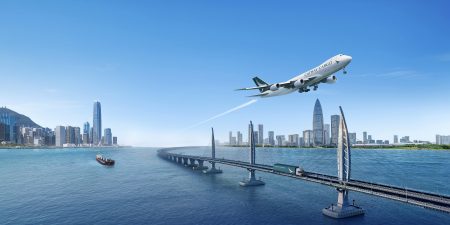- By Della tj
- October 11, 2025
- Amazon FBA, Shipping
Businesses selling on Amazon Japan increasingly depend on professional FBA service China to Japan solutions. Managing packaging, labeling, customs clearance, and direct delivery to Amazon warehouses requires precision and compliance. A specialized FBA provider ensures products reach Japan smoothly, saving sellers time and costs while avoiding customs issues.
What Is FBA Service from China to Japan?
FBA (Fulfillment by Amazon) allows sellers to store goods in Amazon’s warehouses in Japan. Once items arrive, Amazon handles order processing, customer service, and returns. Logistics partners coordinate the shipping process from Chinese factories to Japanese fulfillment centers.
Moreover, professional FBA forwarding services include inspection, labeling, palletization, and customs declaration. Sellers benefit from faster stock replenishment, lower risk, and better customer satisfaction.
How Does FBA Shipping Work Between China and Japan?
Every shipment follows several essential steps that ensure proper execution from origin to destination.
- Supplier Pickup: The forwarder collects goods from the manufacturer in China.
- Quality Check & Labeling: Packages are inspected, labeled, and prepared according to Amazon standards.
- Export Documentation: Customs forms, invoices, and HS codes are prepared for smooth clearance.
- Transportation: Cargo is moved by sea, air, or courier to Japan.
- Import Handling: Forwarders manage import duties and customs inspection in Japan.
- Final Delivery: Goods are delivered to Amazon fulfillment centers such as FBA Narita, Osaka, or Tokyo.
Additionally, using a single logistics partner avoids miscommunication and ensures compliance with Amazon’s strict requirements.
Shipping Options for FBA Service China to Japan
Several shipping modes are available depending on urgency, budget, and product volume. Below is a comparison table showing their differences.
| Shipping Mode | Transit Time | Cost Range | Best For | Advantage |
|---|---|---|---|---|
| Air Freight | 3–7 days | $5–$8/kg | Small, high-value products | Fast and reliable |
| Sea Freight (LCL/FCL) | 10–20 days | $60–$120/CBM | Bulk goods | Economical choice |
| Express Courier (FedEx, DHL) | 2–5 days | $8–$12/kg | Urgent or light parcels | Door-to-door service |
| Dedicated FBA Channel | 6–10 days | $4–$7/kg | Mixed e-commerce goods | Simplified customs |
Each mode offers a balance between time and cost. For example, air freight suits seasonal promotions, while sea freight fits heavy stock replenishment.
Cost Structure and Key Factors Affecting Pricing
The total cost for FBA service China to Japan depends on various factors. Proper planning helps maintain profitability and prevent hidden fees.
| Factor | Description | Impact on Cost |
|---|---|---|
| Weight & Volume | Based on chargeable weight or cubic meter | Heavier goods cost more |
| Shipping Method | Air, sea, or express | Determines overall freight rate |
| Customs Duties | Based on HS code and product category | Increases total landed cost |
| Packaging & Labeling | Amazon-specific preparation | Adds handling fee |
| Seasonal Demand | Peak months raise rates | May cause slight surcharge |
Therefore, shippers should coordinate with forwarders early and request detailed quotations to lock in competitive pricing.
Customs Clearance and Documentation Requirements
Proper documentation ensures that goods clear Japanese customs without delay. Missing or incorrect papers can lead to storage penalties or returns.
| Document | Purpose | Issued By |
|---|---|---|
| Commercial Invoice | Declares value and goods details | Supplier |
| Packing List | Lists carton count and dimensions | Supplier |
| Bill of Lading / Airway Bill | Confirms transport contract | Carrier |
| Certificate of Origin | Confirms country of manufacture | Chamber of Commerce |
| Import Declaration | Required for customs entry | Forwarder |
Additionally, Japan requires compliance with import regulations such as PSE or METI for electronics and food labeling standards for consumables.
Real FBA Shipping Case Studies
Case 1: Shenzhen to Osaka
- Product: Phone accessories (1,000 units, 450 kg)
- Mode: Air freight FBA channel
- Transit Time: 5 days
- Cost: $2,600
- Details: Goods were inspected, relabeled, and shipped directly to Amazon Osaka. Customs handled electronically, saving one full day.
Case 2: Ningbo to Tokyo
- Product: Home storage boxes (FCL, 20ft container)
- Mode: Sea freight
- Transit Time: 14 days
- Cost: $1,850
- Details: Shipped via Ningbo Port to Tokyo Bay warehouse. Customs clearance under DDP terms. Delivery completed within 48 hours post-arrival.
Comparing Air and Sea Freight for FBA Shipments
| Aspect | Air Freight | Sea Freight |
|---|---|---|
| Speed | 3–7 days | 10–20 days |
| Cost | Higher | Lower |
| Volume | Up to 500 kg | Over 3 CBM |
| Reliability | High | Moderate |
| Best Use | Urgent or premium goods | Large volume inventory |
While air freight provides flexibility and shorter delivery, sea freight remains ideal for long-term inventory planning and cost management.
Key Benefits of Using Professional FBA Logistics
Partnering with a reliable logistics company provides several advantages:
- Simplified Amazon compliance for labeling and documentation
- Shorter lead times with optimized routes
- Transparent cost breakdown and predictable delivery
- Multimodal options integrating air, sea, and courier channels
- Continuous tracking and inventory updates
Moreover, professional handling reduces returns, customs delays, and financial risks. Businesses can focus on marketing while logistics experts handle the rest.
Conclusion
To summarize, a well-structured FBA service China to Japan streamlines Amazon operations through fast customs clearance, affordable rates, and consistent reliability. Whether through air, sea, or express, businesses gain full control of delivery schedules and compliance.
Partnering with a professional forwarder not only cuts shipping costs but also secures smooth supply chain flow, helping sellers expand their reach in the Japanese market confidently.
- Consult TJ China Freight Forwarding for the lowest quote. They will provide you with reliable, cost-effective service.
FAQ:
Q1.What is the best way to ship FBA goods from China to Japan?
Air freight or dedicated FBA channels ensure fast customs clearance and guaranteed delivery to Amazon warehouses in Japan efficiently.
Q2.How long does sea freight take from China to Japan?
Typical sea transit requires 10–20 days depending on departure port, customs inspection, and delivery schedule at destination warehouses.
Q3.Are labeling and packaging services included?
Yes. Most FBA forwarders include inspection, labeling, barcoding, and packaging to meet Amazon requirements before exportation.
Q4.What are common Amazon Japan FBA warehouse locations?
Tokyo, Osaka, and Narita serve as main FBA fulfillment centers for imported goods shipped from Chinese suppliers or warehouses.
Q5.Do I need import licenses for Japan FBA shipments?
Some products require approval from Japanese authorities. Always check HS code regulations and necessary certifications before shipping.




